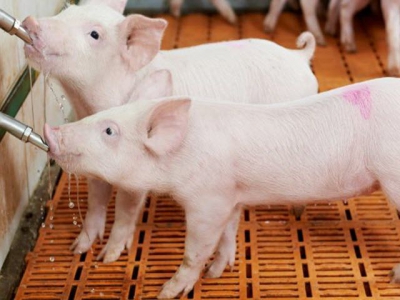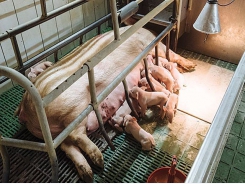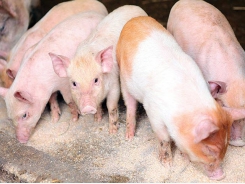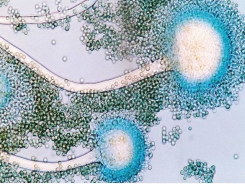Researchers create algorithm to predict PEDV outbreaks

Goal is to have near-real-time risk predictions so farmers and veterinarians can provide preventive care to high-risk areas and make data-based decisions.
Researchers from North Carolina State University have developed an algorithm that could give pig farms advance notice of porcine epidemic diarrhea virus (PEDV) outbreaks.
The proof-of-concept algorithm has potential for use in real-time prediction of other disease outbreaks in food animals, North Carolina State said in its announcement.
PEDV is a virus that causes high mortality rates in preweaned piglets. The virus emerged in the U.S. in 2013 and, by 2014, had infected approximately 50% of breeding herds. PEDV is transmitted by contact with contaminated fecal matter.
Gustavo Machado, assistant professor of population health and pathobiology at North Carolina State and corresponding author of a paper describing the work, developed a pipeline utilizing machine learning techniques to create an algorithm capable of predicting PEDV outbreaks in space and time.
Machado, along with colleagues from the University of Minnesota and Brazil's Universidade Federal do Rio Grande do Sul, used weekly farm-level incidence data from 980 sow farms to create the model. The data included all pig movement types, hog density and environmental and weather factors such as vegetation, wind speed, temperature and precipitation.
The researchers looked at "neighborhoods" that were defined as being within a 10 km radius around sow farms. They fed the model information about outbreaks, animal movements into each neighborhood and the environmental characteristics inside each neighborhood, the university said. Ultimately, their model was able to predict PEDV outbreaks with approximately 80% accuracy.
The most important risk factor for predicting PEDV spread was pig movement into and through the 10 km neighborhood, although neighborhood environment — including slope and vegetation — also influenced risk, the researchers said.
"This proof-of-concept model identified the PEDV spread bottleneck in North Carolina and allowed us to rank infection risk factors in order of importance," Machado said. "As we get more data from other farm sites across the U.S., we expect the model's accuracy to increase. Our end goal is to have near-real-time risk predictions so that farmers and veterinarians can provide preventative care to high-risk areas and make decisions based on data."
Next steps for the researchers include improving the model to predict a wider range of diseases and expanding it to include other industries, such as poultry.
The work appears in Scientific Reports and is supported by the National Pork Board and the Swine Health Information Center.
Source: North Carolina State University, which is solely responsible for the information provided and is wholly owned by the source. Informa Business Media and all its subsidiaries are not responsible for any of the content contained in this information asset.
Related news
Tools

Phối trộn thức ăn chăn nuôi

Pha dung dịch thủy canh

Định mức cho tôm ăn

Phối trộn phân bón NPK

Xác định tỷ lệ tôm sống

Chuyển đổi đơn vị phân bón

Xác định công suất sục khí

Chuyển đổi đơn vị tôm

Tính diện tích nhà kính

Tính thể tích ao




 How to evaluate extra weaning weight from a…
How to evaluate extra weaning weight from a…  3 contaminants to watch for in sow milk
3 contaminants to watch for in sow milk